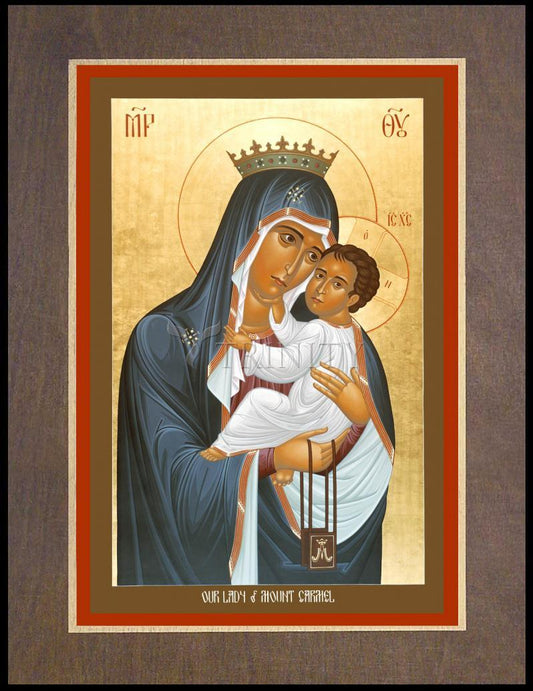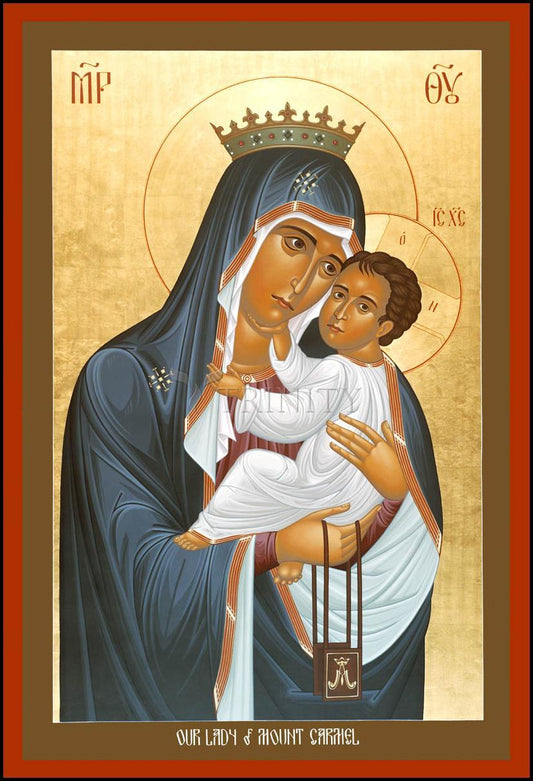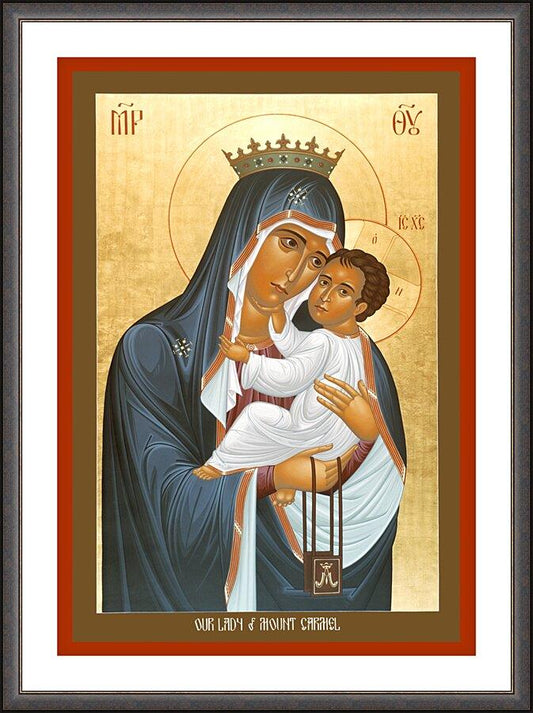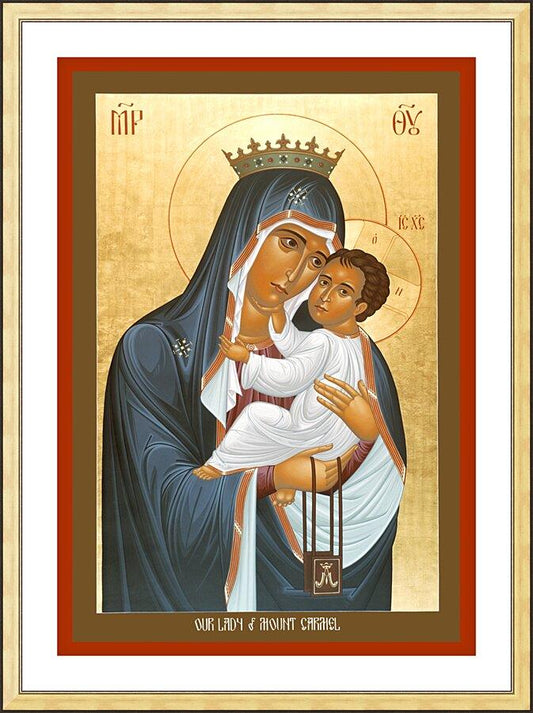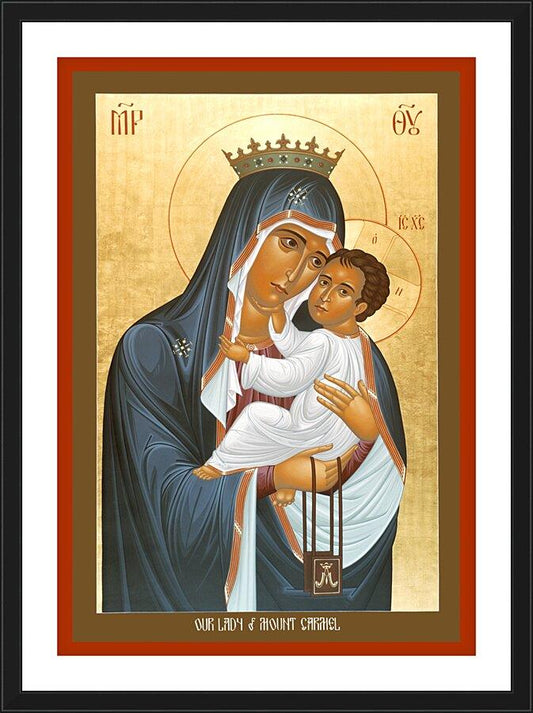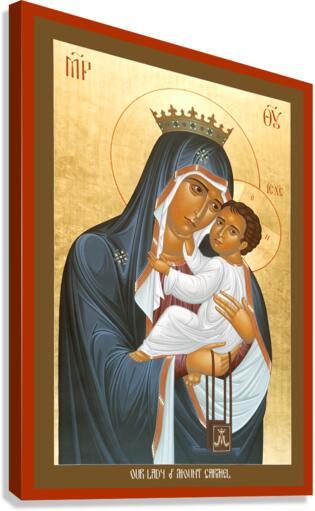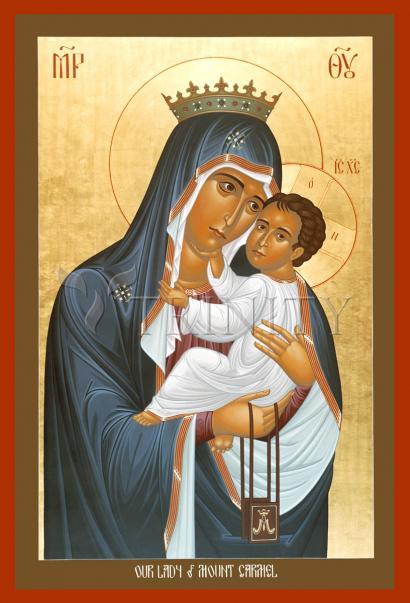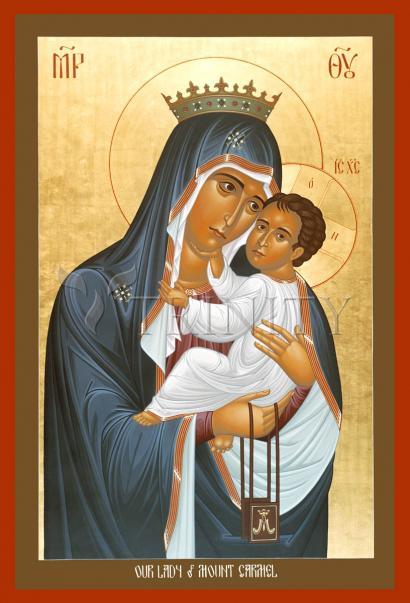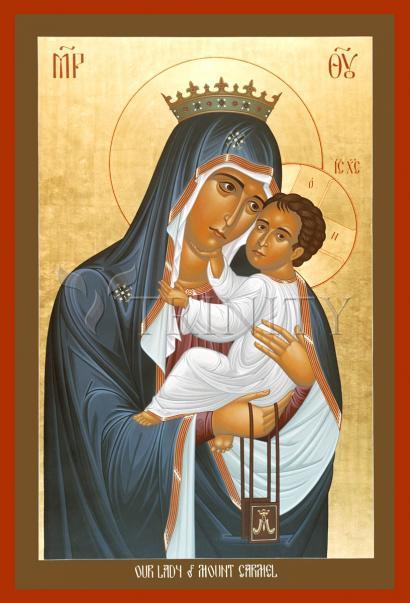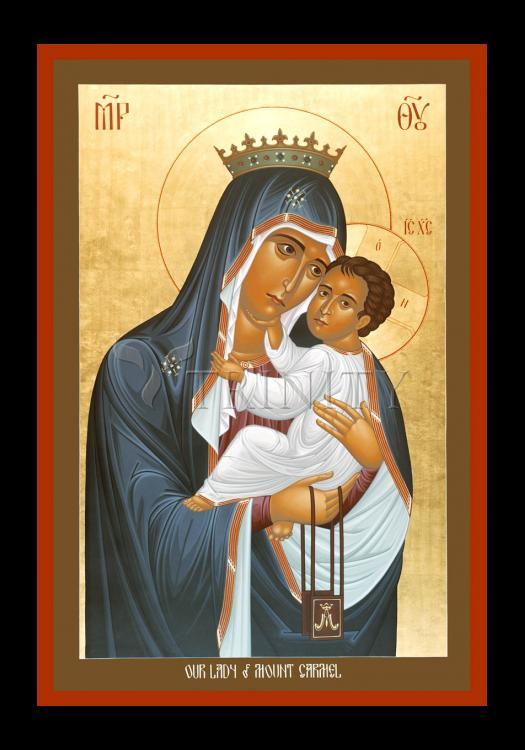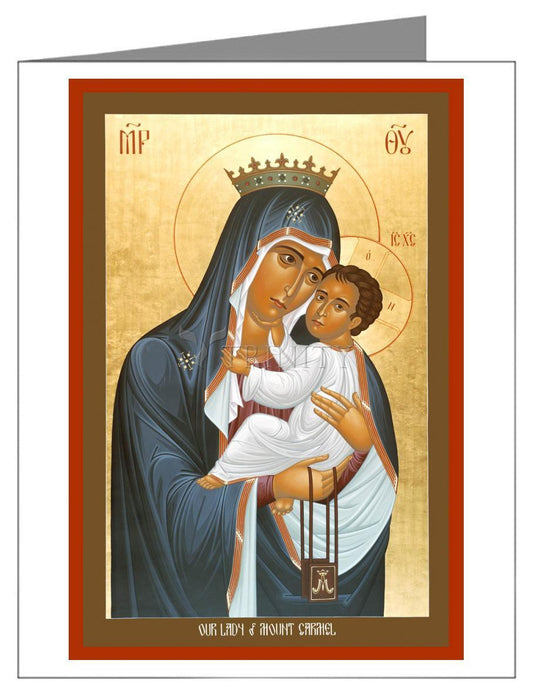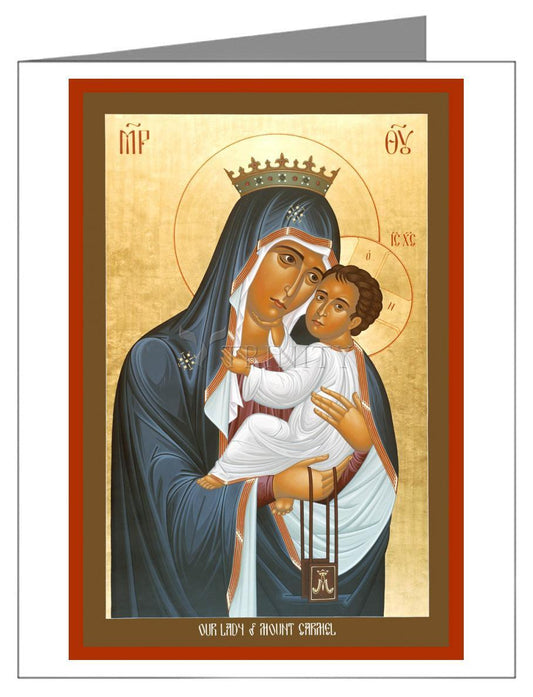Carmelite devotion to Mary
The Carmelites see in the Blessed Virgin Mary a perfect model of the interior life of prayer and contemplation to which Carmelites aspire, a model of virtue, as well as the person who was closest in life to Jesus Christ. She is seen as the one who points Christians most surely to Christ, saying to all what she says to the servants at the wedding at Cana, "Do whatever he (Jesus) tells you." Carmelites look to the Virgin Mary as a Spiritual Mother. The Stella Maris Monastery on Mount Carmel, named after a traditional title of the Blessed Virgin Mary, is considered the spiritual headquarters of the order.
Fr. Gabriel of St. Mary Magdalene de' Pazzi, OCD, a revered authority on Carmelite spirituality, wrote that devotion to Our Lady of Mount Carmel means: a special call to the interior life, which is preeminently a Marian life. Our Lady wants us to resemble her not only in our outward vesture but, far more, in heart and spirit. If we gaze into Mary's soul, we shall see that grace in her has flowered into a spiritual life of incalculable wealth: a life of recollection, prayer, uninterrupted oblation to God, continual contact, and intimate union with him. Mary's soul is a sanctuary reserved for God alone, where no human creature has ever left its trace, where love and zeal for the glory of God and the salvation of mankind reign supreme. Those who want to live their devotion to Our Lady of Mt. Carmel to the full must follow Mary into the depths of her interior life. Carmel is the symbol of the contemplative life, the life wholly dedicated to the quest for God, wholly orientated towards intimacy with God; and the one who has best realized this highest of ideals is Our Lady herself, 'Queen and Splendor of Carmel'."
Prayer to the Blessed Mother of Mount Carmel
"O most beautiful flower of Mt. Carmel, fruitful vine, splendor of Heaven, Blessed Mother of the Son of God, Immaculate Virgin, assist me in my necessity. O Star of the Sea, help me and show me you are my Mother. O Holy Mary, Mother of God, Queen of Heaven and earth, I humbly beseech you from the bottom of my heart to succor me in this necessity (make request). There are none that can withstand your power. O Mary, conceived without sin, pray for us who have recourse to thee. Sweet Mother I place this cause in your hands. Amen."
Church teaching
A 1996 doctrinal statement approved by the Congregation for Divine Worship and the Discipline of the Sacraments states that "Devotion to Our Lady of Mount Carmel is bound to the history and spiritual values of the Order of the Brothers of the Blessed Virgin Mary of Mount Carmel and is expressed through the scapular. Thus, whoever receives the scapular becomes a member of the order and pledges him/herself to live according to its spirituality in accordance with the characteristics of his/her state in life."
According to the ways in which the Church has intervened at various times to clarify the meaning and privileges of the Brown Scapular: "The scapular is a Marian habit or garment. It is both a sign and pledge. A sign of belonging to Mary; a pledge of her motherly protection, not only in this life but after death. As a sign, it is a conventional sign signifying three elements strictly joined: first, belonging to a religious family particularly devoted to Mary, especially dear to Mary, the Carmelite Order; second, consecration to Mary, devotion to and trust in her Immaculate Heart; third an urge to become like Mary by imitating her virtues, above all her humility, chastity, and spirit of prayer."
Our Lady of Mount Carmel and Purgatory
Our Lady of Mount Carmel has been related with Purgatory where souls are purged of sins in the fires, from centuries ago. In some cases, she is shown accompanied with angels and souls wearing Brown Scapulars, who plead for her mediation. In 1613, the Church forbade images of Our Lady of Mt. Carmel descending into purgatory to be made, due to errors being preached about certain privileges associated with the Brown Scapular ("the Sabbatine Privilege").
That privilege appears in mentioned Decree of the Holy Office (1613), and later was inserted in its entirety (except for the words forbidding the painting of the pictures) into the list of the indulgences and privileges of the Confraternity of the Scapular of Mount Carmel. Today, the Carmelites, while encouraging a belief in Mary's general aid and prayerful assistance for their souls beyond death, especially her aid to those who devoutly wear the Brown Scapular, and commending devotion to Mary especially on Saturdays which are dedicated to her, do not focus on the Sabbatine Privilege.
Apparitions
Our Lady of Mount Carmel was seen in the apparitions at Fatima to Lucia dos Santos during the miracle of the sun and also appeared to St. Simon Stock to whom she gave the Brown Scapular.
Miracles of Our Lady of Mount Carmel
In Palmi on November 16 of each year is commemorated the earthquake of 1894, which had its epicenter in the city and in which an event occurred defined as the "miracle of Our Lady of Mount Carmel". For 17 days preceding this earthquake many of the faithful had reported strange eye movements and changes in the coloring of the face in a statue of Our Lady of Mount Carmel. The local and national press reported these strange occurrences and in the evening of November 16 the faithful improvised a procession carrying the statue on the shoulders of some of the faithful through the streets. When the procession reached the end of the city, a violent earthquake shook the whole district of Palmi, ruining most of the houses along the way of the procession. Only nine people died out of a population of about 15,000 inhabitants, as almost all of the population had been on the street as a result of the procession. Therefore a commemoration of the 1894 procession takes place each year accompanied with the firing of firecrackers, lights and festive stalls.
The Catholic Church has officially recognized the miracle, crowning the statue November 16, 1896 as a result of the decree issued by the Vatican Chapter September 22, 1895.



